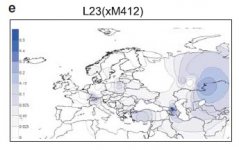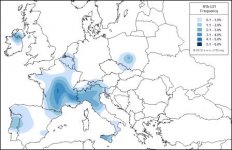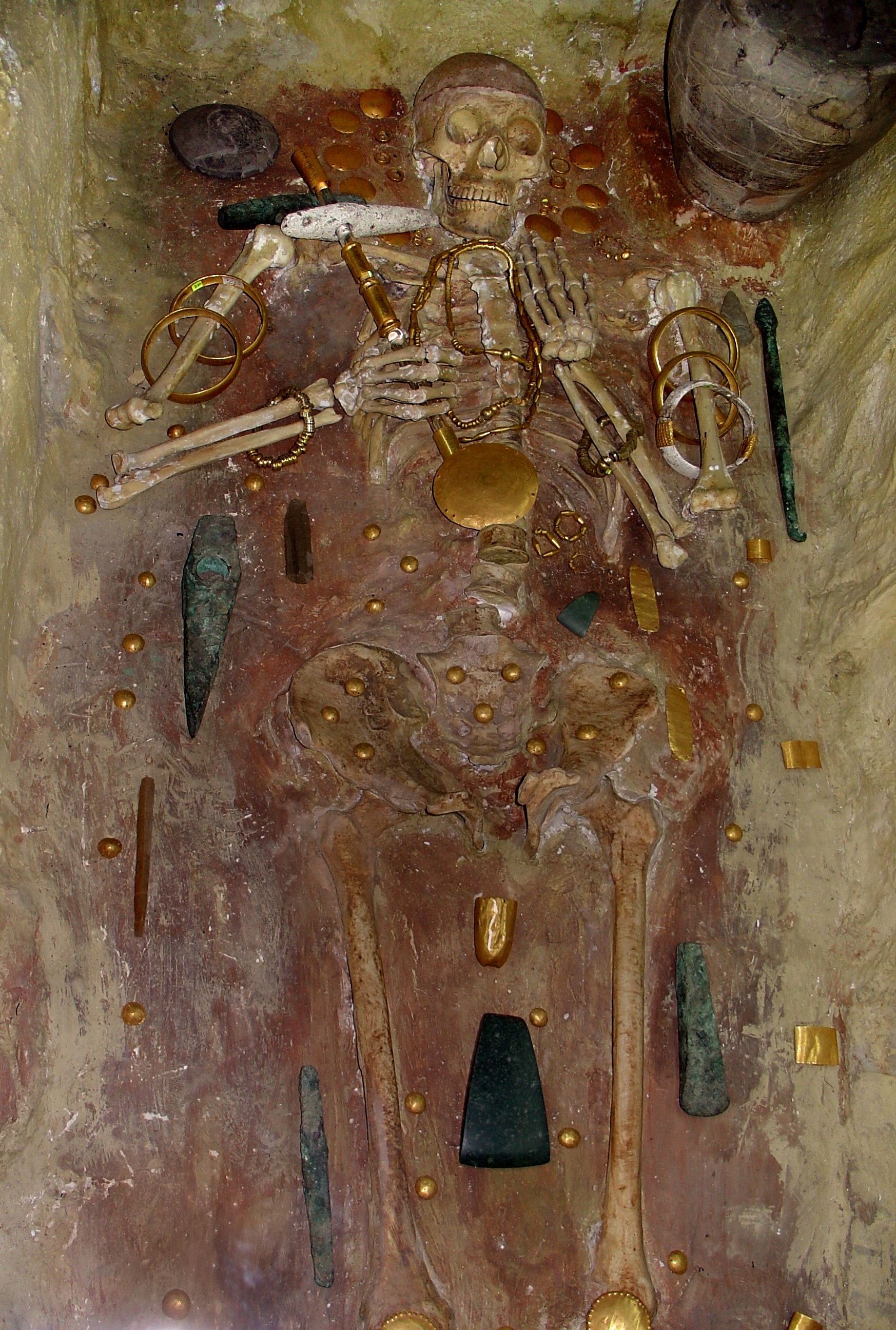Athiudisc
Banned
- Messages
- 212
- Reaction score
- 49
- Points
- 0
- Ethnic group
- North Sea Islander
- Y-DNA haplogroup
- R1b-L45
- mtDNA haplogroup
- K2b1a
It seems a bit unlikely that a man (let's call him L23) had a great-great-grandson (let's call him Z2103) and another great-great-grandson (let's call him L51) two-thousand miles apart from each other over six-thousand years ago. Not impossible, sure, but that's a long way to resettle in less than a century. YFull puts the two younger clades as contemporaneous, around 6,300 years ago.
Genetiker's theory ignores the fact that modern distribution isn't indicative of origin, especially given known population movements in eastern Europe in historical times that would tend to obfuscate the existence of previous groups. It also ignores the fact that our Yamna samples are from a very small portion of a rather large horizon. This is just another iteration of their "R1b were the megalithic people from an Iberian refugium" idea, an idea popular a decade ago but largely abandoned today due to genetic evidence.
Genetiker's theory ignores the fact that modern distribution isn't indicative of origin, especially given known population movements in eastern Europe in historical times that would tend to obfuscate the existence of previous groups. It also ignores the fact that our Yamna samples are from a very small portion of a rather large horizon. This is just another iteration of their "R1b were the megalithic people from an Iberian refugium" idea, an idea popular a decade ago but largely abandoned today due to genetic evidence.






